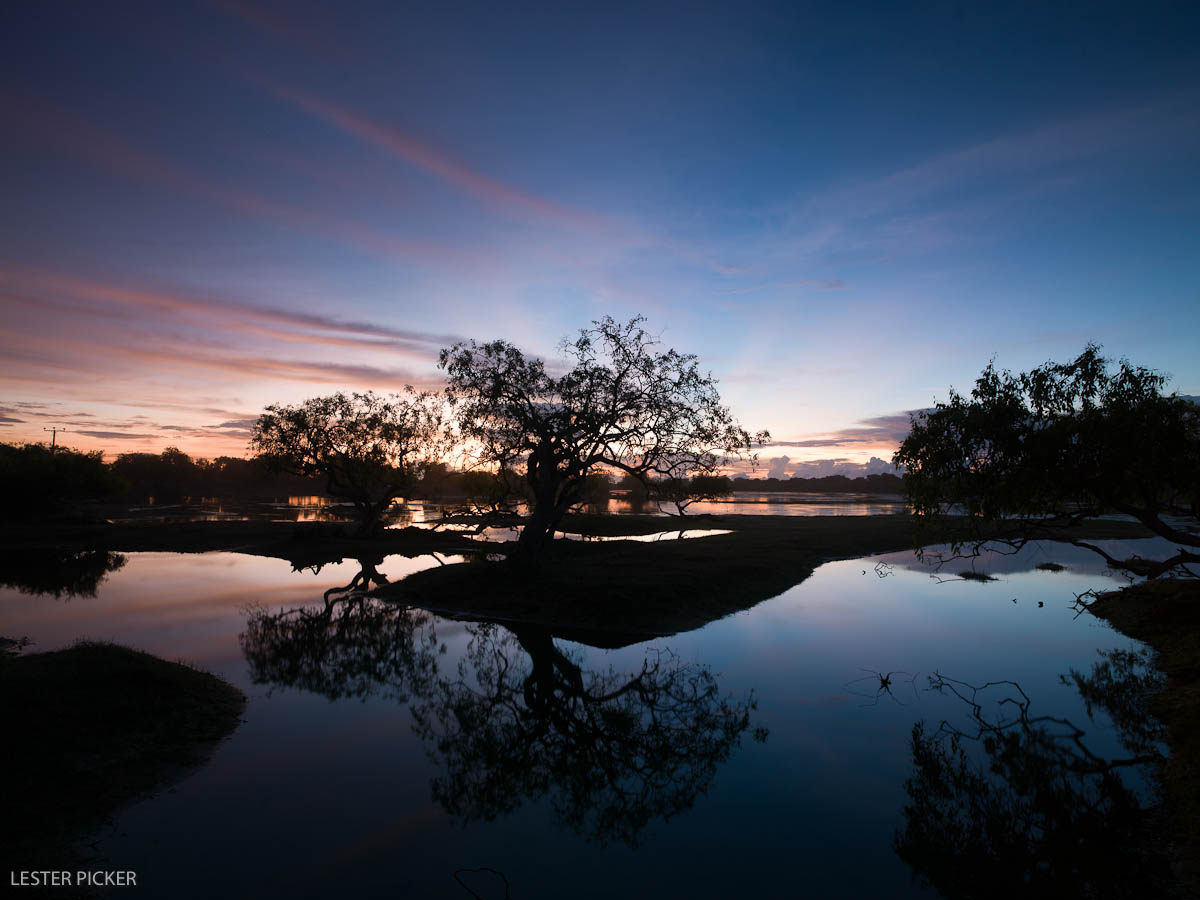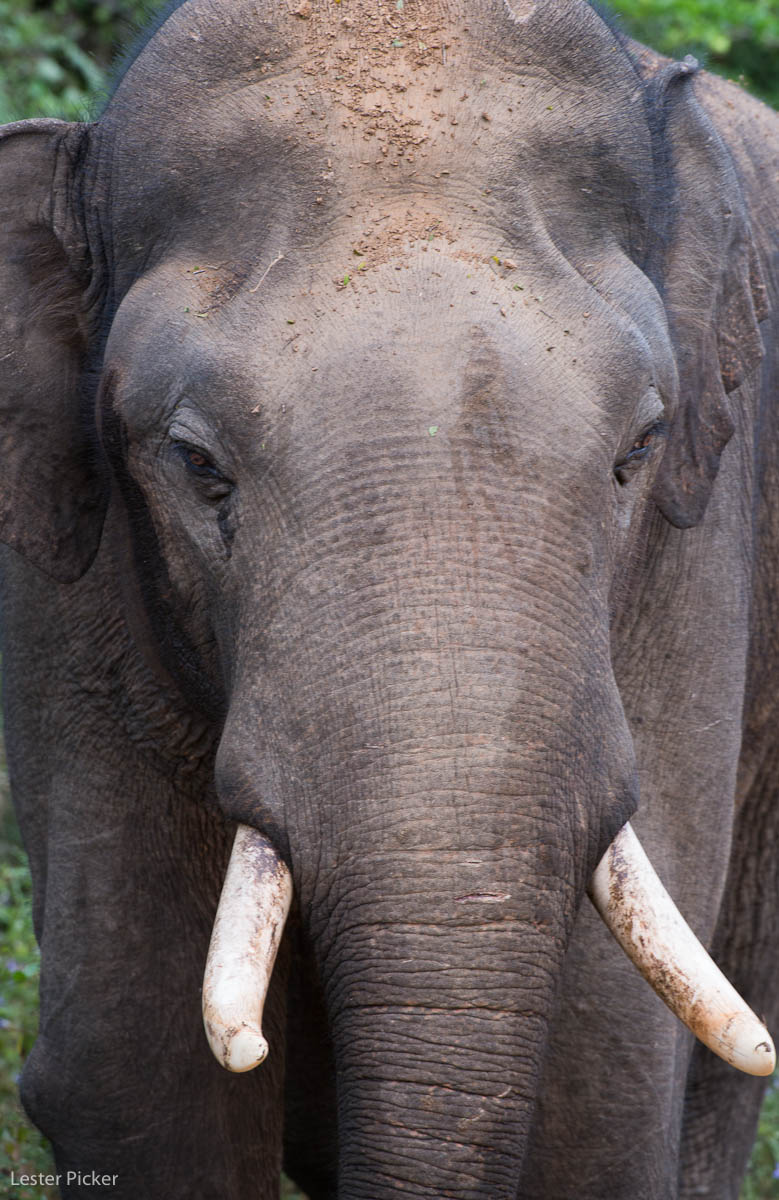
Sri Lanka’s Incredible Yala National Park
Nearly every tourist who visits Sri Lanka will also visit Yala National Park. Aside from its Buddhist temples which attract millions of adherents, Yala NP is Sri Lanka’s second largest draw for visitors.
I personally had misgivings about visiting the park, having been on safari in Africa. However, after spending 6 game drives in the park, I’m here to tell you that Yala is a worthwhile, wonderful experience… with some caveats, especially for families with younger children. Please note that I’m posting this blog while I’m still in Sri Lanka and so did not have an opportunity to post-process my images.
Not Your Typical Park
Yala is huge, with narrow, rutty roads criss-crossing the park. You must enter in an approved jeep. I suggest you make sure you hire a guide that speaks your language better than passably, as you’re bound to have many questions (one precious question I heard from a young girl in a nearby jeep at a watering hole was why that massive bull elephant had two trunks; one dangling from its head and the other between its legs. Mom and Dad had a good time explaining that one!).What the narrow roads and forested topography mean is that animal spotting is an active pursuit. It doesn’t just happen. You drive all morning or afternoon to earn your sightings. Most people make two safaris in a day, one in the early morning and the other starting at 3:00 PM until the park closes at six. If you can only do one, do the afternoon where leopard sightings are more common. Do not make the mistake of taking a late morning jeep ride. The animals hide and sleep most of the afternoon due to the heat. However, don’t promise the kids a leopard sighting. One couple I met did eight safaris without spotting one. Leopards are very elusive animals, so count your blessings even if you get a distant sighting.
As a result of the narrow roads and very limited sight lines caused by the forest and shrubs, whenever a leopard is sighted jeeps race to the scene and from both road directions. The upshot is a nightmarish traffic jam that can take an hour to clear as jeeps vie for a good spot for their clients. No one is allowed to venture out of the jeep and the jeeps may not leave the road, so it can be terribly frustrating for photographers. Best to have your own jeep for maneuverability and to use that time instead on landscapes or other animals.
In fact, if you are photographer I strongly recommend you take a private jeep tour. I did both the first day and then ended up hiring a private jeep for my remaining visits. Costs are very reasonable for a private jeep (be prepared to bargain). That way you can stop wherever you like. But you will not be able to get out of the jeep anywhere within the park. That is a strict rule and a driver will lose his license if you violate that directive.
Where You Stay Makes a Difference
If you plan to visit Yala, make sure to choose a hotel close to the park. The closest one, Chaaya Wild Lodge, is pricey, but the accommodations and food are first rate. If you cannot stay there, I suggest you be within 30 minutes of the park. The reason is that the park opens at 6:00 AM and you want to be right at the entrance with your jeep driver by six. As is you’ll be getting up at 5:00AM; 4:00 AM is even less fun. And do NOT rely on mileage. The roads leading to Yala are barely that. They are pockmarked, rutted and in terrible repair, so a distance of even 5 km may take 20 minutes or more. Most hotels will pack a hearty box breakfast for you, but be sure to check. Most tours will stop at a safe haven on the Indian Ocean for a 15 minute breakfast and bathroom (spelled b-u-s-h-e-s) break.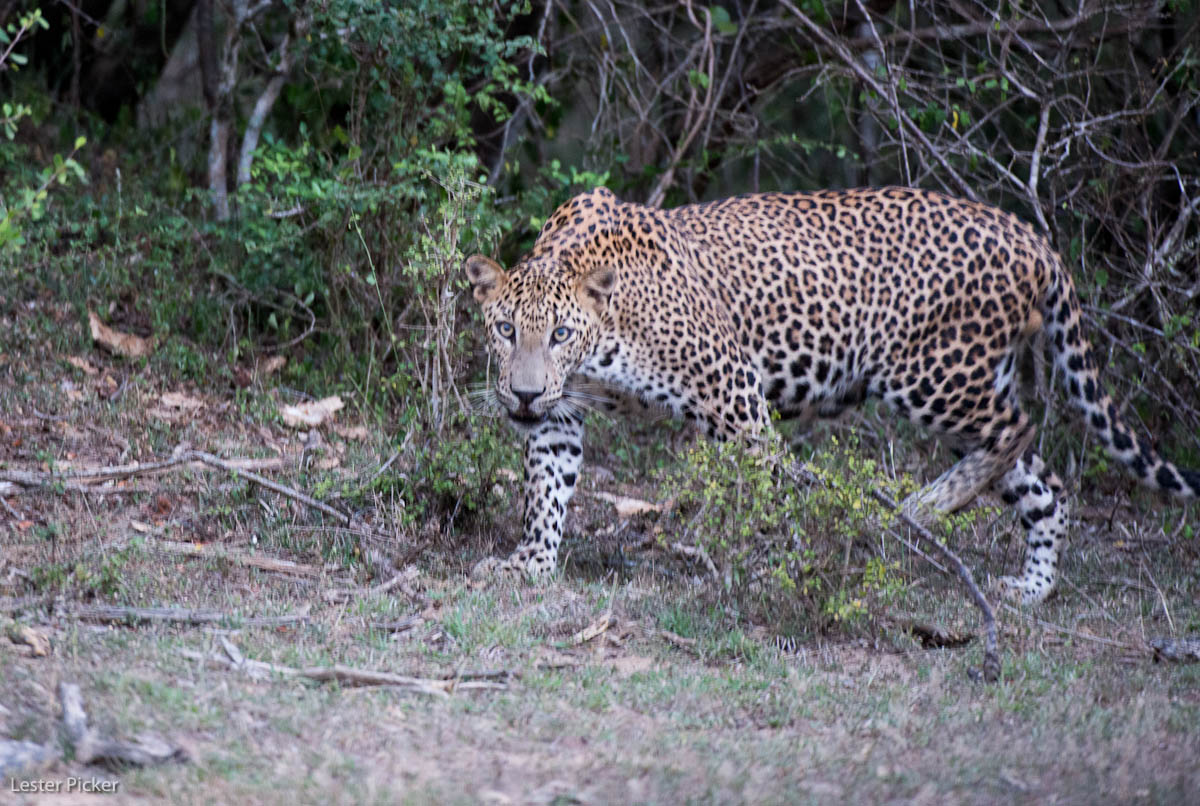
Wildlife Galore
In Yala you will see an abundance of wildlife, but do not go with the expectations of African safaris. You’ll see no herds of animals here, other than small groups of deer or water buffalo. Also, Yala is a forest park. The roads are exceedingly rutty and narrow, meaning that passing an oncoming jeep is a negotiation that happens dozens of time in your tours. However, if you can get past that, here is a partial list of animals I saw in three days of safari. Since it is primarily a forest park, wildlife will virtually step out of the forest right in front of you, even gigantic bull elephants, but then disappear just as quickly. As in Africa, wildlife tend to congregate at waterholes, so your safari will visit many of these.Mongoose
Toucan
Wild boar
Peacock
Elephant
Green Bee Eater and Chestnut-Headed Bee Eater
Water buffalo
Pelican
Leopard
Land monitor
Fish eagle
Changeable hawk eagle
Spotted deer
Crocodiles
Brown fish owl
Tortoise
Rabbit
Storks
Cranes
Jungle Fowl (Sri Lanka’s national bird)
Bear (very rare sighting)
Samba deer/elk
Silver langur monkeys
Jackal
I named only a sampling of birds, since I am not a serious birder and there were dozens of birds that true birders were ga-ga over.
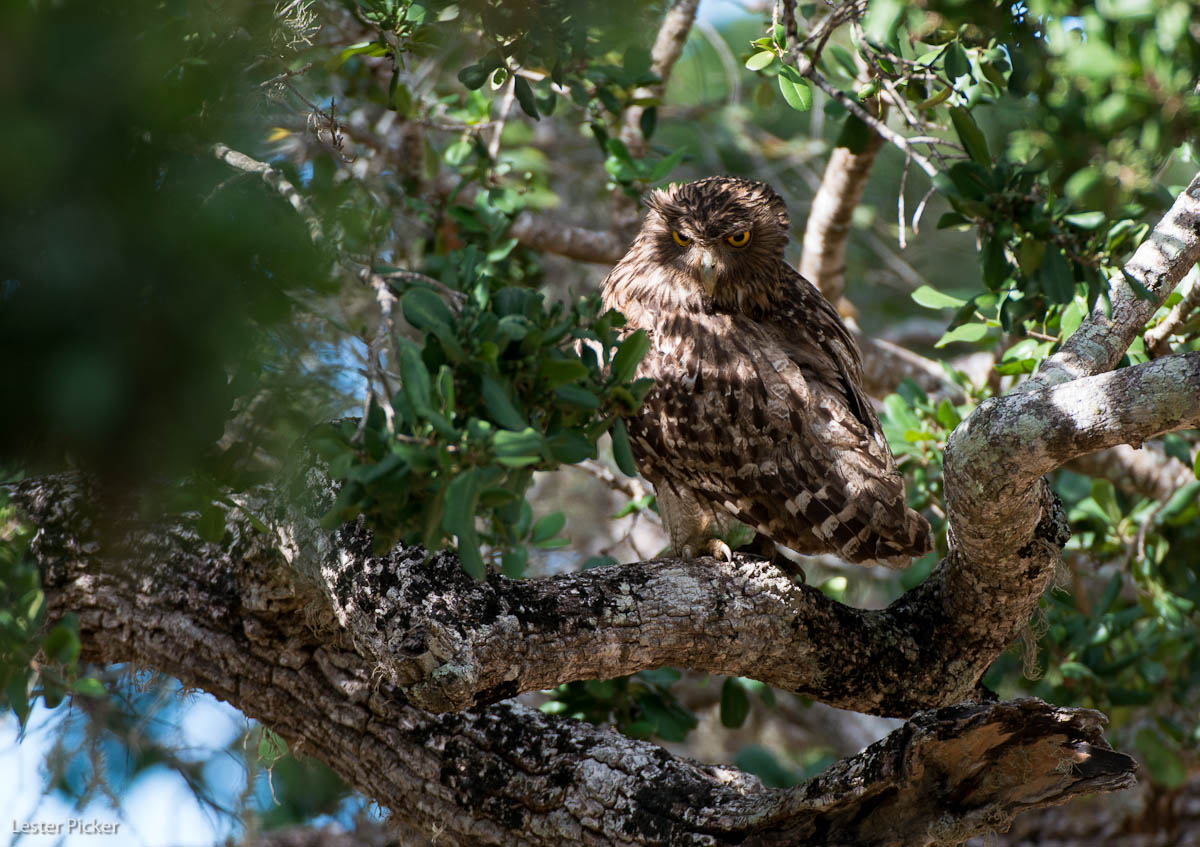
Don’t Forget the Landscape
Yala is bounded on one side by the Indian Ocean, adding a strikingly beautiful element for photographers. As well there are rocky promontories and tortuous trees waiting for your creative interpretation.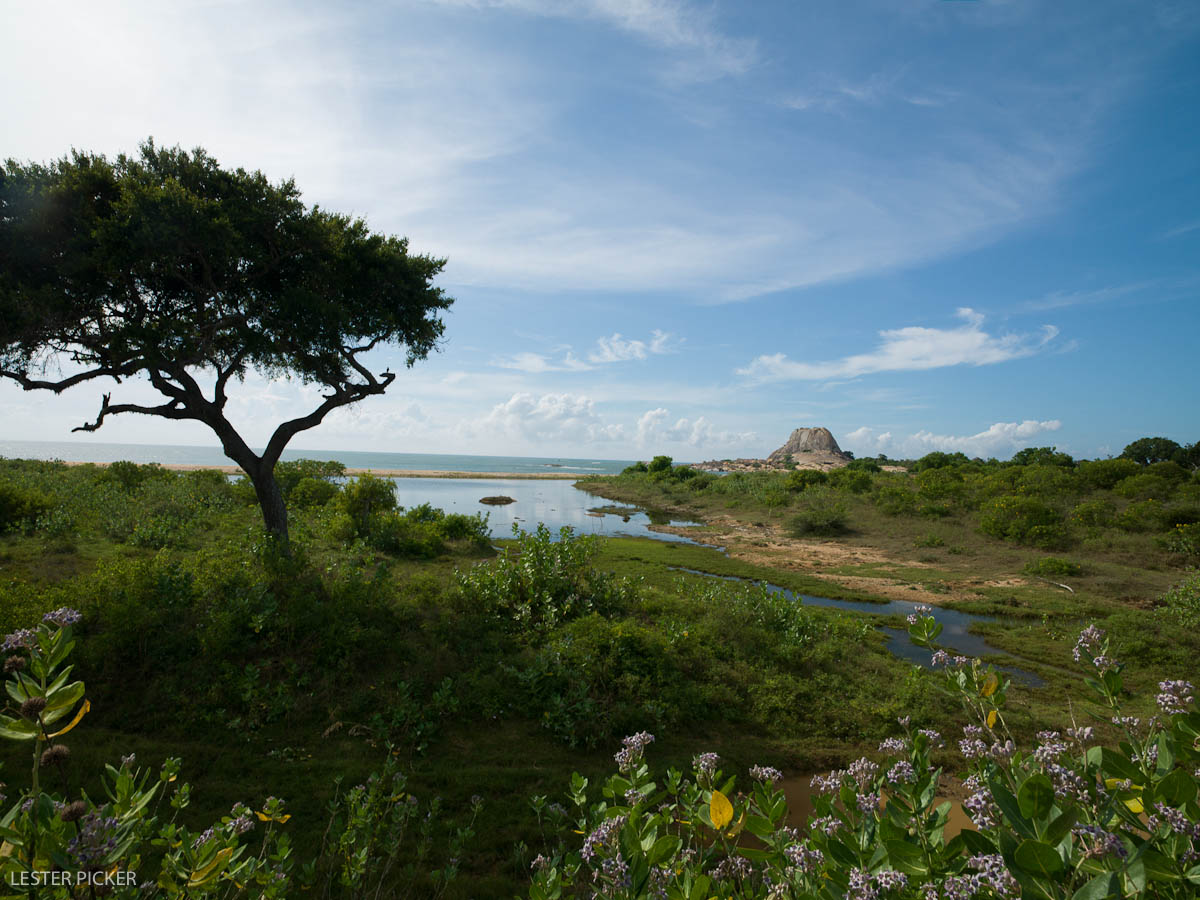
Photo Recommendations
If you plan on photographing in Yalla, here a some tips:First and foremost, bring lots of water as it can get hellishly hot and humid. Also bring food.
Tell your driver right away that when he stops for viewing to shut off the engine immediately. That will reduce shaking and result in better photos.
Use a good tripod or bean bag to stabilize your images, another good reason to have a jeep all to yourself or with one other person.
Bring a polarizer for landscape images.
Be patient. You can go for 2-1/2 hours without seeing a leopard and then suddenly a beautiful male or mother with a cub is right there.
There are plenty of elephants in the park and your nearly guaranteed to see some. But, unlike Africa, you’ll see small families, not large family groupings.
Absolutely essential is a dust-proof bag to completely cover your camera(s). Yala is a very dusty environment and with jeeps constantly passing by the dust problem is real. Develop a ritual to uncover your gear when you shoot, then immediately cover it again when you’re done.
Clean your camera after every safari segment. Do not wait. Bring a blower, brush, cleaning fluid and cloth with you and have it ready in your hotel room. On site use a blower and a LensPen brush/lens cleaner.
